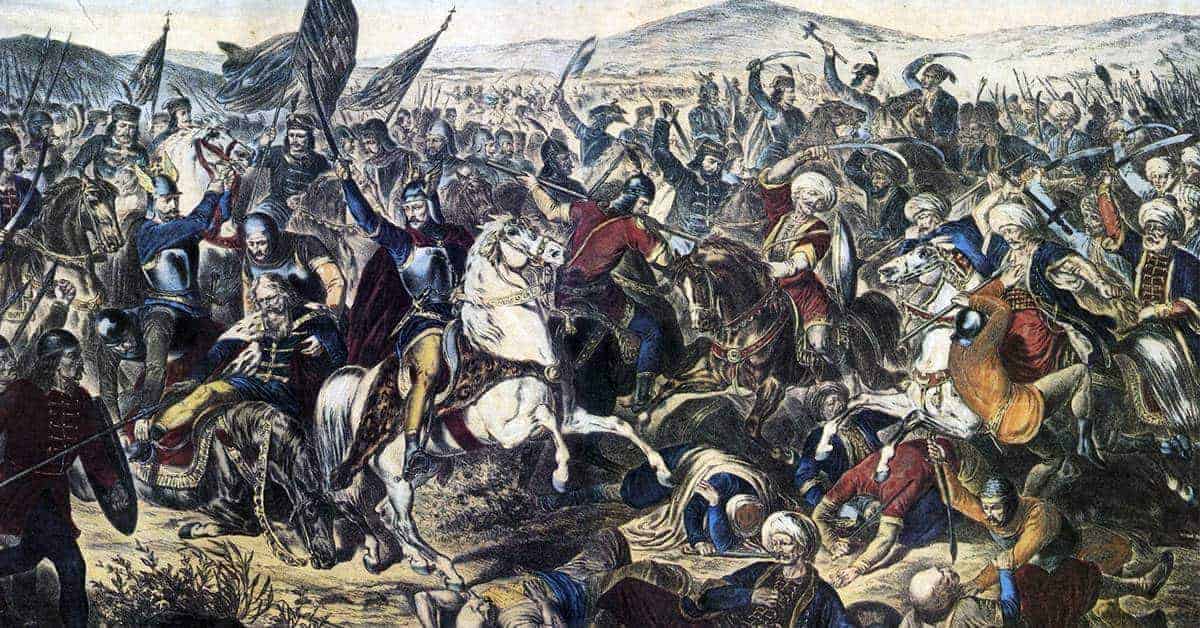Christians and Muslims have fought since the very century that Islam was founded. From the Arab conquests of the 7th and 8th centuries to the Crusades, the Ottoman conquests, and British imperialism, the power has gone back and forth in this centuries-long clash of cultures. Westerners often learn of the early Crusades to the Holy Land, but few learn about the Arab conquests into Spain and the defense of Christian Europe by Charles Martel or the biggest naval battle of the Renaissance at Lepanto that kept the Ottomans from Mediterranean Domination.
Discussing the conflict between the two cultures/religions today is still a tense subject that we won’t get close to now, but the ferocity of conflict was undeniable during the rise of the Ottoman Empire and the frantic defense of Europe by the collection of smaller Christian countries. A great deal of hate and cruelty was found through the centuries of genius commanders, epic battles and last stands known as the Ottoman Wars.

1389: Battle of Kosovo
Except for the taking of Constantinople, there may not be a better example of the grim hopelessness of facing Ottoman conquerors than the Battle of Kosovo. The Ottomans had been pressing into Europe for some time and began to encroach on Serbia and Kosovo. Soon the Sultan Murad I led an army of 30,000 to invade Kosovo. The Serbians gathered an army of up to 30,000, probably less, to defend under Prince Lazar. The two armies met at Kosovo Field on June 15, 1389.
The battle began with the numerous Ottoman archers peppering the Serbian cavalry, who soon decided to charge in several wedge formations. The charges were wildly successful at first, but soon became bogged down in an Ottoman infantry counterattack. The battle lines constantly shifted as a slow Ottoman push weakened one section while renewed Serbian cavalry charges broke through other sections.
Prince Lazar was either killed in the fighting or captured and later killed. Also, during the battle, a Serbian cavalry charge broke all the way through to the Sultan and a lone knight cut Murad down. Another source says that a solo knight of high standing went to defect to Murad personally and then decided to slay Murad on the spot, himself being killed by bodyguards soon after.

The Battle was technically a draw as both sides retreated with utterly decimated armies and killed commanders. The difference was that the Ottomans were already a worldwide juggernaut, quite able to field another 30,000-man army, but the Serbs had given the battle their all, in terms of manpower.
Murad’s son, Bayezid, killed his brother immediately after hearing the news of his father’s death so he wouldn’t have to worry about rivals to the throne. The Serbs were so weak after the battle that regions gradually capitulated and became allies or vassals of the Ottomans as they had no more strength to fight on.
The battle showed that even in victory, small nations had little hope of standing against the might of the Ottomans. This was a lesson that Europe would soon learn and the Ottomans would face various European conglomerations for most of their time in European conquests.

